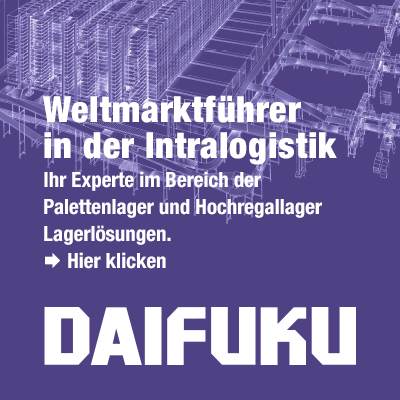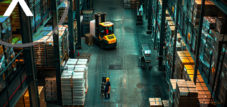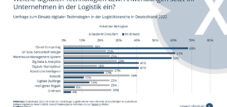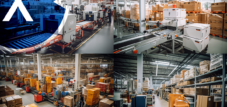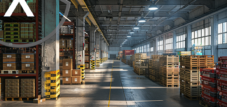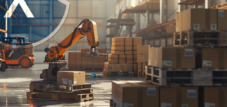Identification, elimination and optimization of bottlenecks in logistics and picking methods
Language selection 📢
Published on: October 21, 2024 / update from: October 21, 2024 - Author: Konrad Wolfenstein
🌐📈 Identification and elimination of bottlenecks in logistics 📦🚛 and picking methods
🏷️🔍 In modern logistics, efficient processes are crucial to meeting market requirements. However, shortages can impact the entire supply chain, leading to delays, increased costs and unhappy customers. A critical area where bottlenecks often occur is picking. This is the process of assembling products from a warehouse for shipping to customers or other departments. In order to identify bottlenecks in logistics, especially in picking methods, and make improvements, logistics managers should proceed systematically.
🔎 Steps to identify bottlenecks
Obtain employee feedback
Employees are the heart of every logistics process. Regular meetings or feedback sessions with them offer valuable insights into the daily challenges. It is often the employees who know best where there are problems in the company. Your observations and suggestions can be crucial in identifying vulnerabilities.
Data analysis
In today's data-driven world, analyzing operational data is essential. By collecting and analyzing data on lead times, error rates, and other relevant metrics, patterns can be identified that indicate specific bottlenecks. This analysis helps not only to identify problems but also to measure the success of improvement measures.
Process observation
Direct observation of the picking processes on site can reveal inefficient processes or waiting times. By carefully studying the work processes, immediate opportunities for improvement can often be identified.
Use technological tools
The use of modern technologies such as warehouse management systems (WMS) provides real-time data on inventory levels and picking activities. These systems can help quickly identify and eliminate bottlenecks.
🚀 Possible improvements
Optimization of warehouse placement
One of the easiest ways to improve efficiency is to strategically place items in the warehouse. Frequently used items should be placed closer to the picking stations to shorten paths and reduce picking time.
Training and continuing education
Regular training for employees helps increase their efficiency and accuracy. Well-trained employees are able to carry out their tasks faster and more accurately.
automation
The use of automation technologies such as conveyor belts or order picking robots can significantly increase efficiency. These technologies not only reduce the workload of employees but also minimize human errors.
Process standardization
Standardized work instructions are another key to improving the consistency and quality of picking. They ensure that all employees work according to the same procedures, which reduces error rates and increases productivity.
🔄 Long-term strategies for improvement
In addition to the short-term measures mentioned above, logistics managers should also consider long-term strategies:
Investment in technology
Continuous investment in new technologies can bring significant long-term benefits. This includes not only automation solutions, but also advanced analysis tools that enable more precise predictions.
Consider sustainability
In times of growing environmental awareness, sustainability is becoming increasingly important. Logistics processes should be aimed at minimizing the ecological footprint. This can be achieved through more efficient route planning or the use of environmentally friendly packaging materials.
Maintain flexibility
The ability to quickly adapt to changes in the market or supply chain is critical to long-term success. Flexible processes enable companies to react effectively to unforeseen events.
Strengthen customer orientation
Ultimately, any improvement in logistics should aim to improve customer service. Satisfied customers are more loyal and contribute to the long-term success of a company.
🏆 Long-term strategies are crucial for success
Identifying and eliminating bottlenecks in logistics requires a holistic approach. By combining employee feedback, data analysis, process observation and the use of modern technologies, logistics managers can not only identify existing bottlenecks, but also achieve sustainable improvements. Long-term strategies such as investments in technology and sustainability as well as a strong customer focus are crucial for success in an ever-changing global economy. These measures can not only increase efficiency, but also maintain competitiveness in the market.
📣 Similar topics
- 🚚 Improvement of logistics processes
- 🔍 Bottleneck identification methods
- 📊 Increase efficiency through data analysis
- 🤝 Use employee feedback
- ⚙️ Automation in picking
- 🌿 Sustainable logistics strategies
- 💡 Use modern technologies
- 📦 Optimized warehouse organization
- 💪 Flexibility in the supply chain
- ⭐ Customer-oriented logistics solutions
#️⃣ Hashtags: #Logistics #Efficiency #Sustainability #Automation #Customer Orientation
Xpert partner in warehouse planning and construction
🚚🔍 Identification and optimization of bottlenecks in logistics and picking methods
📦🌍 Logistics is an essential part of modern companies and has a significant impact on their efficiency and competitiveness. One of the biggest challenges is identifying bottlenecks that impede the flow of goods and services. The picking methods in particular play a central role as they significantly influence the speed and accuracy of the ordering process. Bottlenecks in logistics, especially in picking methods, can lead to delays, increased costs and dissatisfied customers. Addressing these issues requires a systematic approach that incorporates both human and technological resources.
📈🔍 Steps to identify bottlenecks in logistics
A first, often overlooked step to identifying bottlenecks is gathering feedback from employees. Employees, especially those directly involved in day-to-day logistical operations, are often best informed about the operational vulnerabilities. Regular meetings or feedback sessions provide the opportunity to collect suggestions for improvement and identify specific problems that may otherwise go unnoticed. It is crucial that these meetings take place in an open and constructive atmosphere to encourage honest feedback.
Another essential step is data analysis. By systematically collecting and analyzing data such as lead times, defect rates and inventory levels, patterns can be identified that indicate bottlenecks. Data analysis makes it possible to gain objective insights into the performance of logistics processes. Long-term trends should also be taken into account in order to identify not only current but also potential future bottlenecks. Data obtained from warehouse management systems (WMS) or similar technologies is particularly valuable because it often provides real-time insights into operations.
Direct process observation is also an effective method for identifying inefficient processes or waiting times. Through on-site inspections, the logistics manager can observe actual work processes and analyze where unnecessary delays or bottlenecks occur. These observations should ideally be used in combination with insights gained from data analysis to provide a complete picture.
The use of technological aids is almost indispensable these days. In addition to warehouse management systems, other technologies such as barcode scanners, RFID (radio frequency identification) systems and order picking robots can also be used to increase efficiency and identify bottlenecks early. These technologies not only provide better visibility into current inventory, but also reduce manual errors that can lead to delays.
🔧🚀 Opportunities for improvement to eliminate bottlenecks
After bottlenecks have been identified, the next step is to implement measures to resolve them and avoid them in the long term. One of the first measures could be to optimize warehouse placement. Items that are picked particularly frequently should be strategically placed near the picking stations. This measure reduces the distances traveled and speeds up the entire picking process.
In addition, training and further education for warehouse staff should be carried out regularly. Well-trained employees are not only more efficient, but also make fewer errors, improving the overall performance of logistics processes. It can be helpful to use the latest training methods such as e-learning or augmented reality (AR) to make the training practical and appealing.
Automation technologies are playing an increasingly important role in modern logistics. The use of conveyor belts, automated storage and picking systems or autonomous robots can significantly increase efficiency. These technologies reduce manual workload, reduce error rates and increase the speed of processes. Automation solutions can lead to significant improvements, especially in large warehouses where large quantities of goods have to be moved.
Another aspect that is often underestimated is process standardization. The introduction of standardized work instructions ensures that all employees work according to the same specifications and thus ensures consistent quality of processes. Process standardization is particularly important in companies with multiple locations, as different working methods can often lead to incompatibilities and inefficiencies.
🔮🚛 Future of logistics: trends and innovations
Logistics is constantly changing, and companies that do not adapt in a timely manner risk being left behind. One of the most exciting developments in logistics is the increasing use of artificial intelligence (AI) and machine learning. These technologies make it possible to make predictions about future orders and inventory levels, leading to better planning and resource allocation. AI-supported systems can also independently make optimization suggestions by analyzing large amounts of data and recognizing patterns that could be missed by the human eye.
The introduction of drones and autonomous vehicles could also revolutionize logistics. Drones and autonomous vehicles offer a promising solution, particularly in areas that are difficult to access or in the so-called “last mile” – i.e. delivery of goods directly to the end customer. They are faster, cheaper and more environmentally friendly than traditional transport methods. Although these technologies are still in their early stages, companies that invest in these innovations early on can achieve significant competitive advantages in the long term.
Another emerging trend is the concept of “green logistics”. As consumers and governments become more environmentally conscious, companies need to make their logistics processes more environmentally friendly. This can be done by optimizing transport routes, using electric vehicles or reducing packaging materials. Sustainability is increasingly becoming a crucial competitive factor, and companies that do not adapt their logistics processes to this new reality risk losing customers and market share.
🌐📡 The role of digitalization in logistics
Digitalization has fundamentally changed the logistics industry in recent years. In addition to the automation technologies already mentioned, networking plays a crucial role. The Internet of Things (IoT) allows all parts of the supply chain to communicate with each other in real time. Sensors installed in trucks, warehouses or containers continuously provide information about the condition of the goods, their position and the ambient temperature. This data can be used to make faster, more informed decisions and identify potential problems early.
Cloud-based warehouse management systems enable companies to access and analyze their data from anywhere in the world. This is particularly advantageous for companies with global supply chains, as they can keep track of their goods flows at all times. Cloud technology also facilitates collaboration between different departments and locations, which in turn leads to more efficient planning and execution of logistical processes.
🤝🛠️ Combination of modern technologies offers the best approach to identifying and resolving vulnerabilities
Identifying bottlenecks in logistics, particularly picking methods, is critical to a company's long-term success. A combination of employee feedback, data analysis, direct process observation and the use of modern technologies offers the best approach to identifying and resolving weak points. Through targeted measures such as optimizing warehouse placement, automating processes and regularly training employees, companies can not only increase their efficiency but also strengthen their competitiveness in the market. Given rapid technological advances and increasing demands for sustainability and efficiency, it is essential that companies continually review and adapt their logistics processes.
📣 Similar topics
- 📦 Increased efficiency through modern technologies in logistics
- 🔍 Identify bottlenecks: The first step to optimization
- 🤖 Automation in warehouse and logistics: opportunities and advantages
- 📊 Use data analysis for more efficient logistics processes
- 🚀 Innovations in logistics: From AI to drones
- ♻️ Green logistics: Sustainability as a competitive advantage
- 📈 Process standardization: key to quality assurance
- 👥 Feedback culture in logistics: involve employees
- 🛠️ Technological solutions to eliminate bottlenecks
- 🌐 Digitalization and IoT: Changing logistics landscape
#️⃣ Hashtags: #Logistics #Efficiency #Technology #Sustainability #Innovation
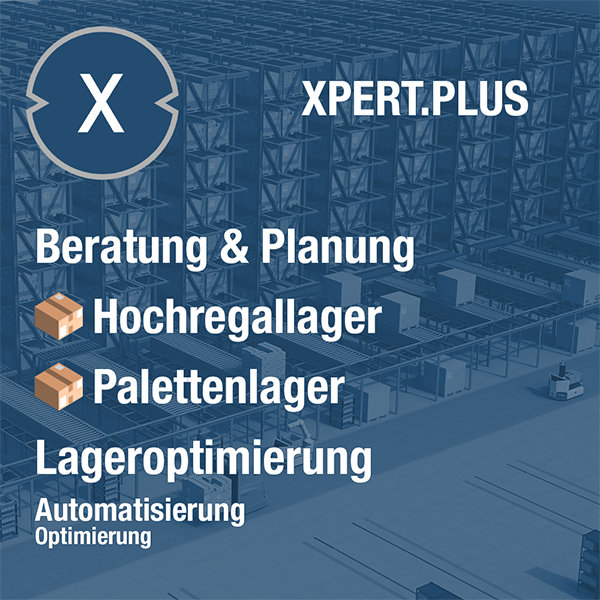
Xpert.Plus warehouse optimization - high-bay warehouses such as pallet warehouses consulting and planning
We are there for you - advice - planning - implementation - project management
☑️ Smart City & Factory: Industry expert for energetic 5G buildings and halls as well as advice and installation of solar systems
☑️ Xpert.Plus - logistics consulting and logistics optimization
☑️ Industry expert, here with his own Xpert.Digital Industry Hub with over 2,500 specialist articles
I would be happy to serve as your personal advisor.
You can contact me by filling out the contact form below or simply call me on +49 89 89 674 804 (Munich) .
I'm looking forward to our joint project.
Xpert.Digital - Konrad Wolfenstein
Xpert.Digital is a hub for industry with a focus on digitalization, mechanical engineering, logistics/intralogistics and photovoltaics.
With our 360° business development solution, we support well-known companies from new business to after sales.
Market intelligence, smarketing, marketing automation, content development, PR, mail campaigns, personalized social media and lead nurturing are part of our digital tools.
You can find out more at: www.xpert.digital - www.xpert.solar - www.xpert.plus




